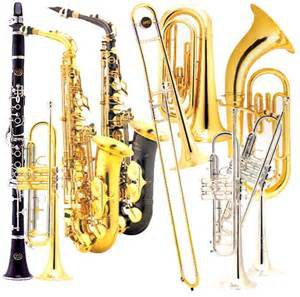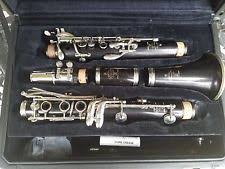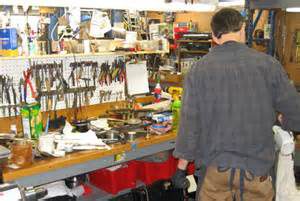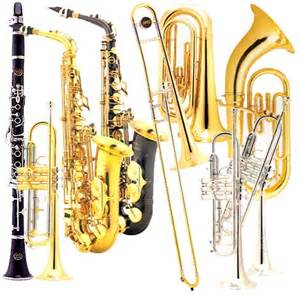 Back when I had my store, I would often see a comparison shopper, generally a young woman with a young family (we’ll call her Tammi), who came in with a question. “I need a clarinet for Julie, who starts middle school band in a week, what do you have for cheap?”
Back when I had my store, I would often see a comparison shopper, generally a young woman with a young family (we’ll call her Tammi), who came in with a question. “I need a clarinet for Julie, who starts middle school band in a week, what do you have for cheap?”
Tammi has never been in a music store in her life, and is overwhelmed by the number of choices she needs to make. Tammi had just been to the ‘rental night’, or similar event, where the school gym is filled with music stores who have brought their rental stock and their contracts to see what needs they could fill.
Tammi has discovered a number of things:
New clarinets are not cheap. The standard, plastic, student-model clarinet that Tammi was offered  could be purchased for about $700, or rented for $38 per month. $700 was out of her budget, but she was a little bit shy about the ‘rental’ contract, which indicated that she would own the instrument after 36 months, when she will have paid $1,368 for her $700 clarinet. On a month-to-month basis, it might have been manageable, and regular maintenance was included, which made sense, given that Julie is a beginner, and accidents do happen. Tammi has learned to read these contracts.
could be purchased for about $700, or rented for $38 per month. $700 was out of her budget, but she was a little bit shy about the ‘rental’ contract, which indicated that she would own the instrument after 36 months, when she will have paid $1,368 for her $700 clarinet. On a month-to-month basis, it might have been manageable, and regular maintenance was included, which made sense, given that Julie is a beginner, and accidents do happen. Tammi has learned to read these contracts.
After researching a bit on the internet, Tammi knows that she can get a slightly better deal by buying the clarinet online, but the warranty information is a bit sketchy. Julie is a beginner, after all, and there may be a service issue down the road, forcing Tammi to ship the clarinet off to a facility far from her, without any way of knowing how long it will be gone.
Tammi is going to learn a few things while she’s in my shop:
- New is not necessarily better. Many makers have discovered that they can build a clarinet similar to
 the ones they have built over the years, but making the parts lighter and thinner, they can do it cheaper, making the sale more profitable for them. Lighter and thinner is not what you want to hear when choosing a clarinet for a beginner. Beginners are going to be a bit rough on the instrument until they learn how to handle it successfully. The older methods of construction are often more robust, and will last longer. Many times, I’ve worked on 50 year old American-made instruments, still in good shape, that are now on their 3rd generation of beginner student!
the ones they have built over the years, but making the parts lighter and thinner, they can do it cheaper, making the sale more profitable for them. Lighter and thinner is not what you want to hear when choosing a clarinet for a beginner. Beginners are going to be a bit rough on the instrument until they learn how to handle it successfully. The older methods of construction are often more robust, and will last longer. Many times, I’ve worked on 50 year old American-made instruments, still in good shape, that are now on their 3rd generation of beginner student!  A well-made, refurbished instrument is often a much better buy than a new one. I always kept a good stock of Vito clarinets on hand. Vito, an American-made student clarinet, is thought by me and many other technicians to be the best student model clarinet ever made. These are well-engineered, stoutly-made clarinets that will stand up to several generations of beginners. Because of several American makers consolidating, Vito is no longer made, but there are plenty of them around. I would buy or trade for these clarinets, them refurbish them to play and look like new, and sell them for about $400.
A well-made, refurbished instrument is often a much better buy than a new one. I always kept a good stock of Vito clarinets on hand. Vito, an American-made student clarinet, is thought by me and many other technicians to be the best student model clarinet ever made. These are well-engineered, stoutly-made clarinets that will stand up to several generations of beginners. Because of several American makers consolidating, Vito is no longer made, but there are plenty of them around. I would buy or trade for these clarinets, them refurbish them to play and look like new, and sell them for about $400. Tammi could arrange for this to happen herself, and save even more money. She could buy a good Vito on Ebay for $25+shipping, locate a shop to refurbish it, spend about $300, and have a shiny, well-made clarinet, in perfect shape, and be out of pocket about $350.
Tammi could arrange for this to happen herself, and save even more money. She could buy a good Vito on Ebay for $25+shipping, locate a shop to refurbish it, spend about $300, and have a shiny, well-made clarinet, in perfect shape, and be out of pocket about $350.
 There are similar deals available on all the common beginner instruments – flute, clarinet, saxophone, trumpet, trombone, baritone horn. One good way to start is to locate an instrument repair shop that will work with you on this type of project. Recommendations from private teachers is one way to go, another is to visit www.napbirt.org, the website of the National Association of Professional Band Instrument Repair Technicians, a group of instrument technicians dedicated to learning and technical development of their skills.
There are similar deals available on all the common beginner instruments – flute, clarinet, saxophone, trumpet, trombone, baritone horn. One good way to start is to locate an instrument repair shop that will work with you on this type of project. Recommendations from private teachers is one way to go, another is to visit www.napbirt.org, the website of the National Association of Professional Band Instrument Repair Technicians, a group of instrument technicians dedicated to learning and technical development of their skills.
There are lots of used instruments available. For instance, as I’m writing this, there are 5,140 clarinets available on Ebay. How to sort them out? I’m going to name names here. Limit yourself to instruments made in these countries: USA, (western) Europe, Japan. I’m not excluding the makers in other countries, but they have only recently come to good instrument-building. The bargains are in the older, well-made brands. Here’s a list of brand names I like:
- Flutes – Artley, Armstrong, Bundy, Gemeinhardt, Yamaha, Pearl
- Clarinets – Bundy, Vito, Yamaha, Noblet, Normandy
- Saxophones – Bundy, Yamaha, Selmer, Leblanc, Conn (avoid Conns made in Mexico), King
- Trumpets – Bach, Conn, King, Getzen, Leblanc, Selmer, Bundy, Yamaha, Holton, Olds (USA)
- Trombones – Bundy, Conn, King, Selmer, Getzen, Bach, Yamaha, Holton, Olds (USA)
- Baritone horns – Conn, King, Bundy, Holton, Selmer, Olds (USA)
Good hunting!
Note – I’ve been retired from the musical instrument technician field for some years.
Next note – All the brand names mentioned in this post are the property of their respective owners: Bundy, Conn, King, Leblanc, Noblet, Normandy, Selmer, Bach, and Holton are owned by Conn-Selmer, Inc. Getzen is owned by Getzen Co. Yamaha is owned by the Yamaha Corporation of America. Pearl is owned by Pearl Corporation, USA. Olds is owned by F. E. Olds.
P.P.S. – your comments are welcome!


Hi, Maxx, and thanks for your interest! There’s a lot that can be learned, and you correctly point out that not all new instruments are necessarily the best. Some are of course very good, but some used ones can also be very good AND a bargain. I’m glad you were able to use the information.
Hey Berry, I am glad found your site. Great article. just nice of thinking buying a NEW clarinet for a present. In my mind, the new always present the best but after reading your article, my thought has changed.
First of all, when doing research the price is the main concern. As you said I need to fork out as much as thousand dollars to buy a present for my friend which is quite not affordable for me.
I just want to purchase something that he will use very often on a daily basis. Now you save my life and money. haha. Lol
Hi, Caleb, and thanks for your interest! The same principles apply to many things in the world of musical instruments. For instance, consider the differences between a shiny, new, Pacific Rim violin, and a dull, patina’ed, Stradivarius. For the difference in sound, you’ll pay above $1 million for the old-looking one! I’m glad you found useful information here!
This is a really awesome article! I actually play a couple instruments myself and have a little knowledge of what to buy. However, I didn’t know about all the facts that you provided in your article here. I didn’t know I should pay attention to how the instrument is made. I always assumed newer was better. Thanks for the awesome article!